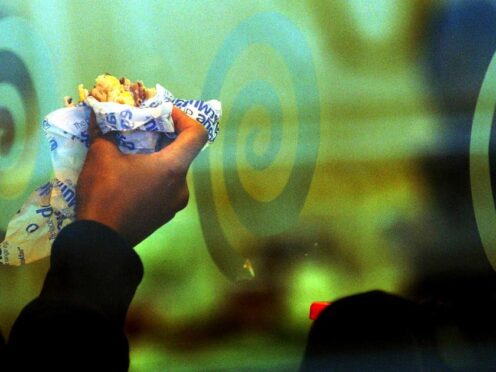Limiting ultra-processed foods (UPFs) may not always result in a healthy and nutritious diet, experts have said.
UPFs are widely viewed as unhealthy because they contain high amounts of saturated fat, sugars and salt.
But scientists said cutting down on UPFs may not necessarily lead to a healthier diet – because the system used to label foods based on the level of processing, known as Nova, does look at nutritional values.
For example, some packaged foods such as unsweetened apple sauce, filtered milk, liquid egg whites, and some brands of raisins and canned tomatoes can be classed as ultra-processed, even though these are “nutrient dense”, the team said.
The researchers also found certain foods that are labelled as minimally processed by Nova can be more expensive, have a shorter shelf life, and provide a poor diet.
Presenting the findings at the American Society for Nutrition conference in Chicago, Dr Julie Hess, a research nutritionist at the United States Department of Agriculture (Usda), said: “This study indicates that it is possible to eat a low-quality diet even when choosing mostly minimally processed foods.

“It also shows that more-processed and less-processed diets can be equally nutritious (or non-nutritious), but the more-processed diet may have a longer shelf life and be less costly.”
For the study, the researchers created two breakfast menus, both containing jam on toast and eggs cooked in different ways.
The “less-processed” menu, which featured homemade jam and bread and poached egg with bacon, derived 20% of its calories from UPFs.
The “more-processed” breakfast, which contained shop-bought jam and bread, egg toast made with ham, and hash browns, derived 67% of its calories from ultra-processed foods.
Both meals received a “low” score of about 43-44 out of 100 in the Healthy Eating Index, a tool used to measure diet quality based on how well it aligns with the Dietary Guidelines for Americans.
But the less processed menu was more than twice as expensive and reached its expiry date over three times faster without delivering any additional nutritional value, the researchers said.
Dr Hess said: “The results of this study indicate that building a nutritious diet involves more than a consideration of food processing as defined by Nova.
“The concepts of ‘ultra-processed’ foods and ‘less-processed’ foods need to be better characterised by the nutrition research community.”
Commenting on the research, Dr Hilda Mulrooney, a reader in nutrition and health at London Metropolitan University, said the study “illustrates a major problem many dietitians and nutritionists have with the Nova classification system, namely that it distinguishes foods only on the basis of their degree of processing and not on their nutritional value”.
She said that “rejecting foods on the basis of their degree of processing would risk removing many foods which could add considerable nutritional value to diets”.
Dr Mulrooney said that, in the UK, that many foods classified by the Nova system as ultra processed, such as some breakfast cereals and high-street breads, make “important contributions” to a person’s dietary intake.
She added: “Without them, there is a risk that some groups might not meet the recommended intakes of key nutrients.”
Dr Mulrooney also said cost is also “a really important consideration” when it comes to choosing what foods to eat.
“Foods that last and are affordable are not only likely to be more attractive options to many, but to be the only options for some,” she said.
– The research was funded by the Usda Agricultural Research Service project grant.
